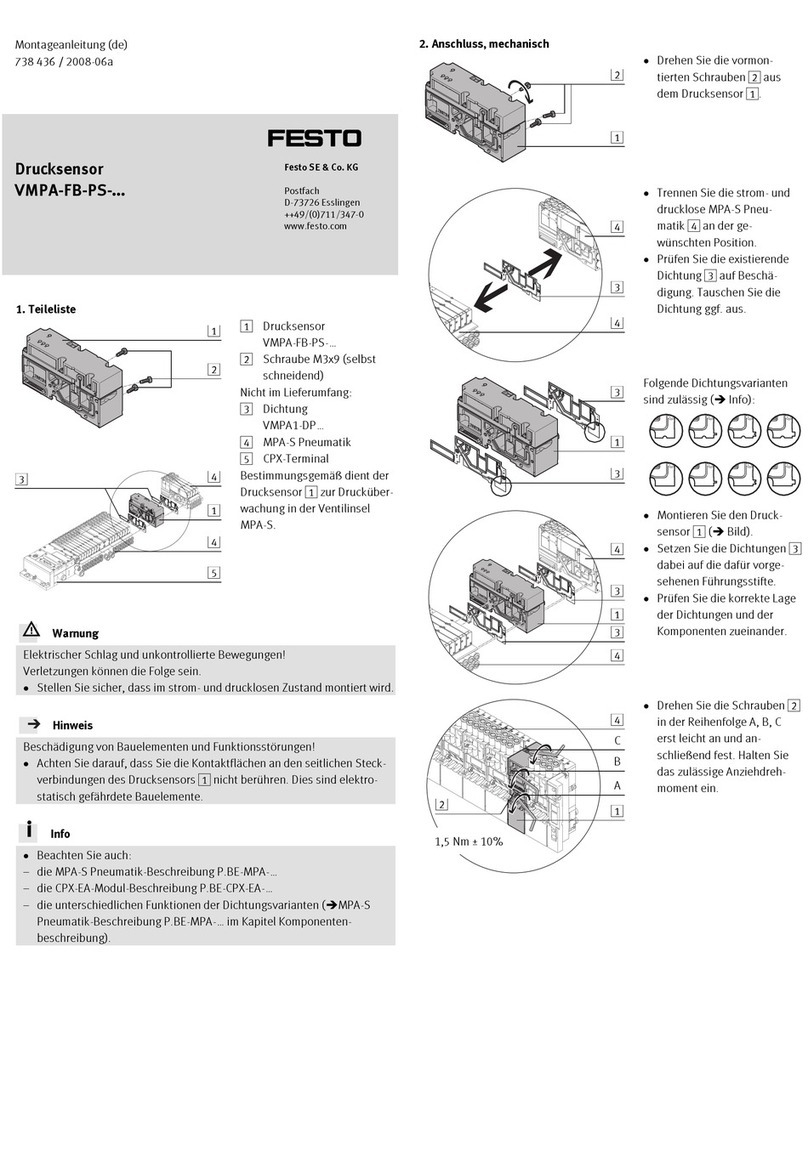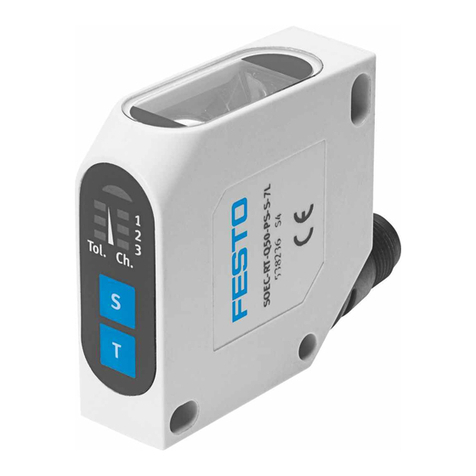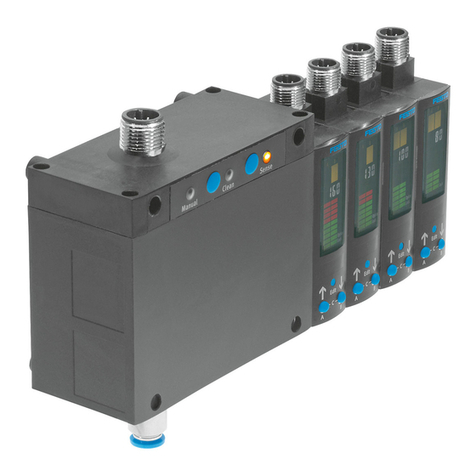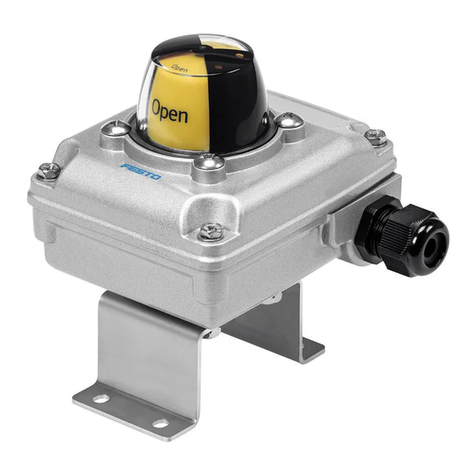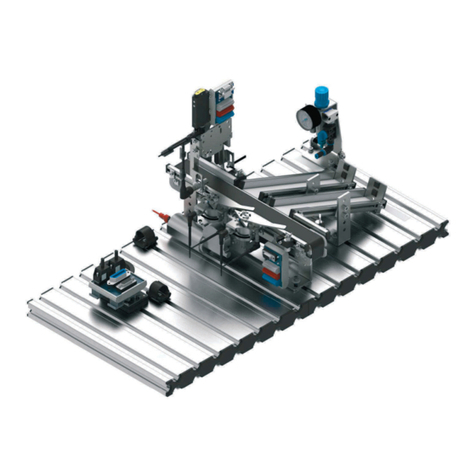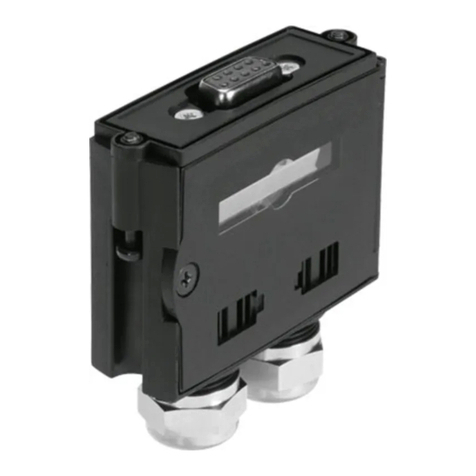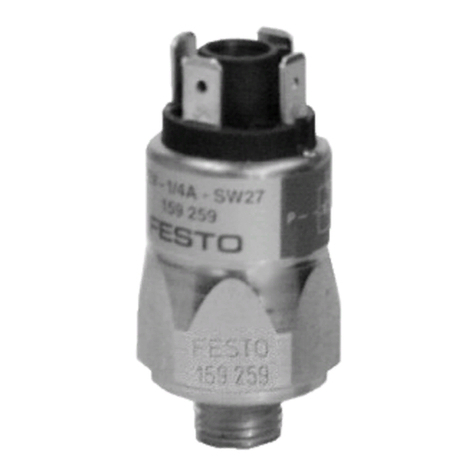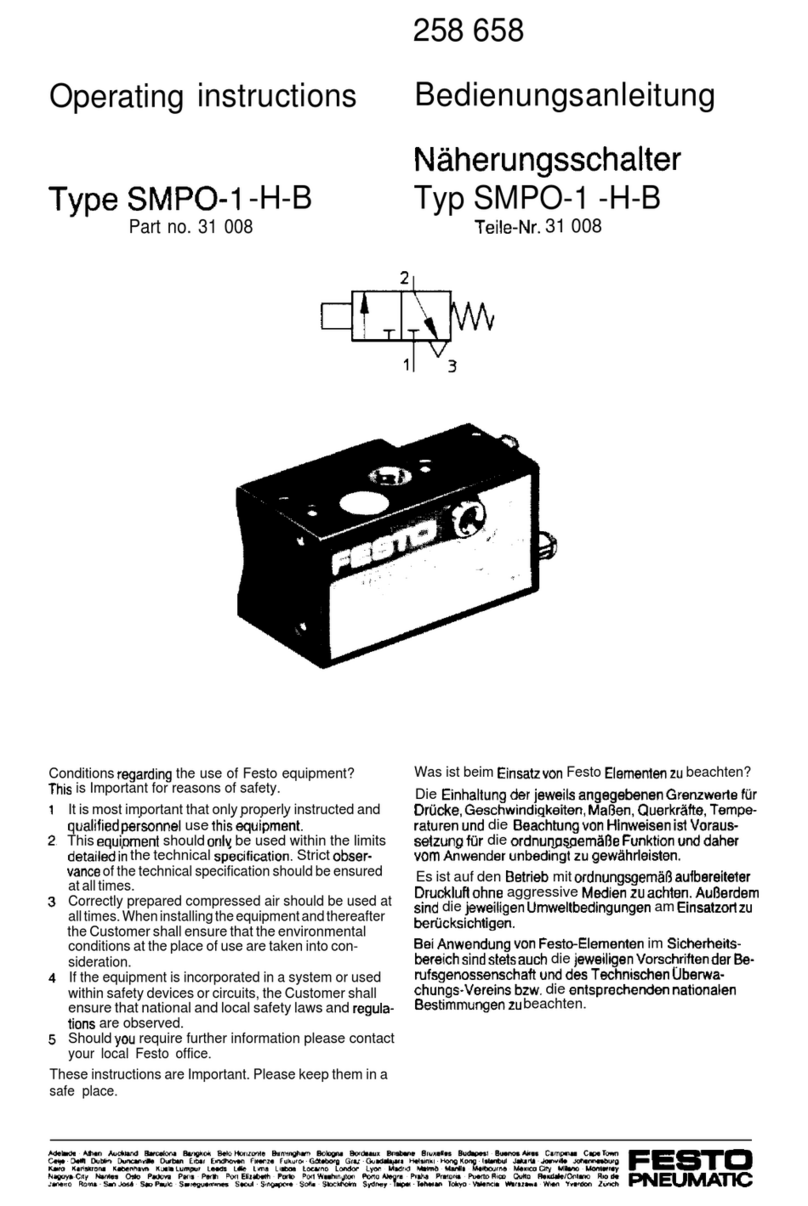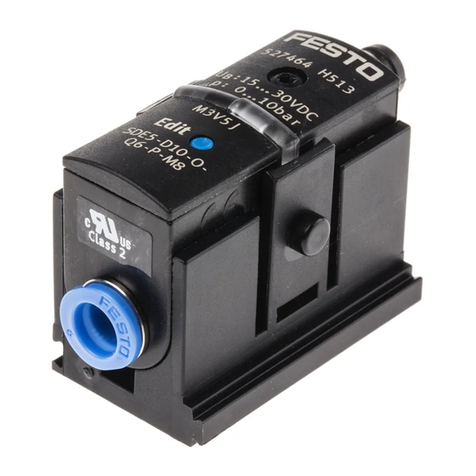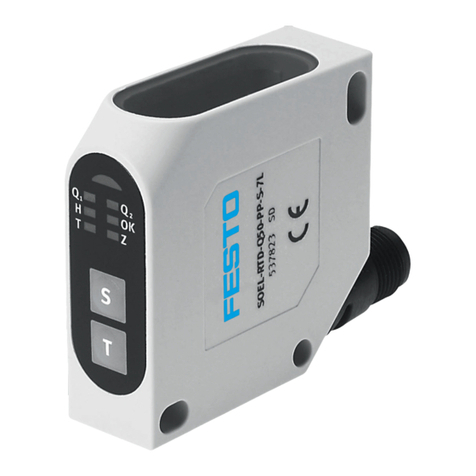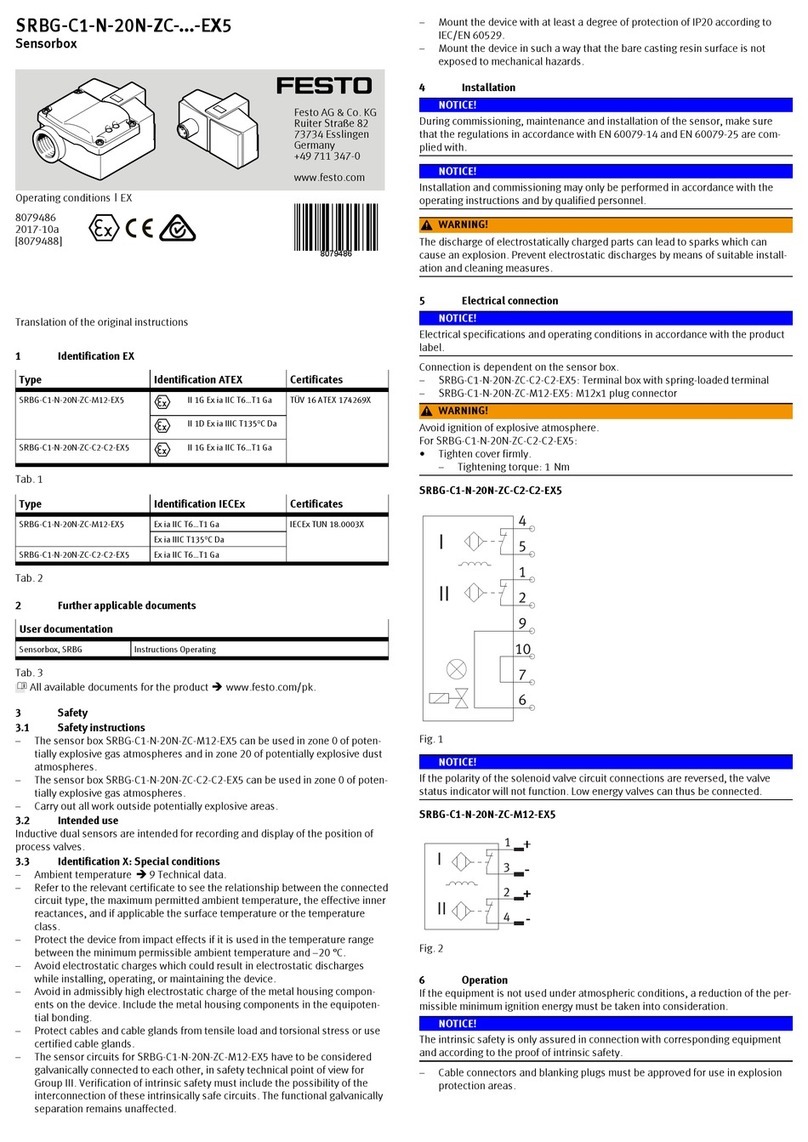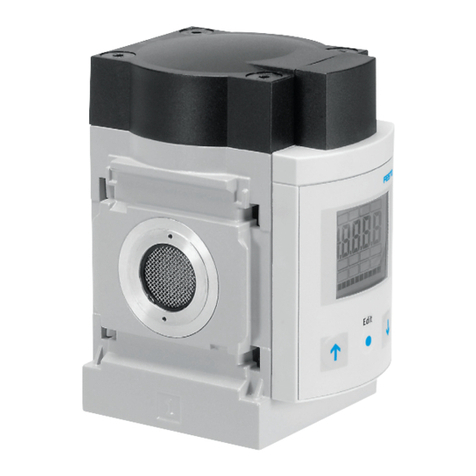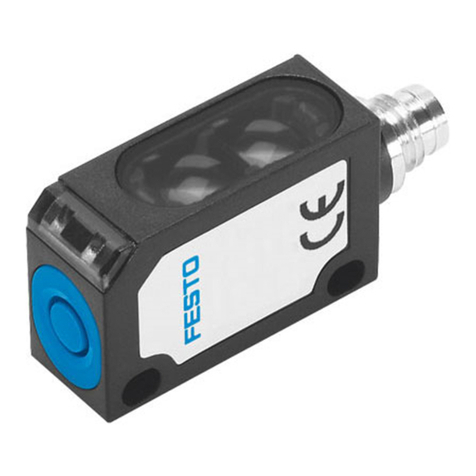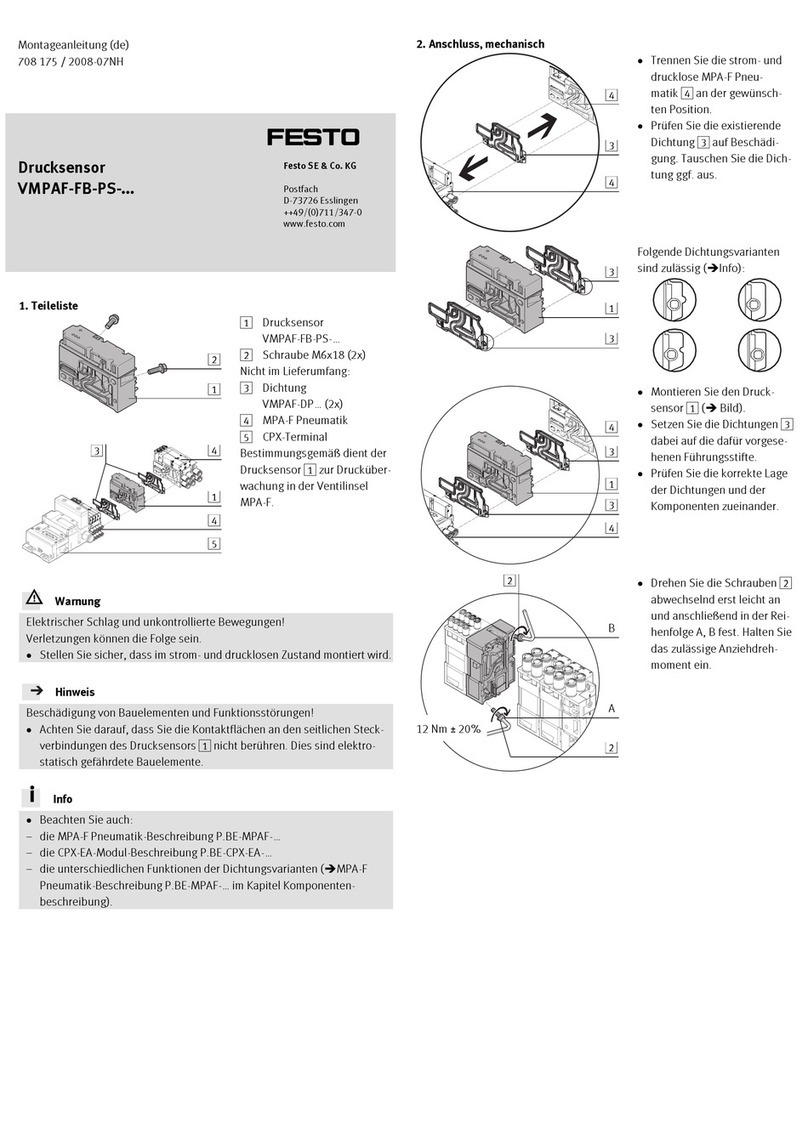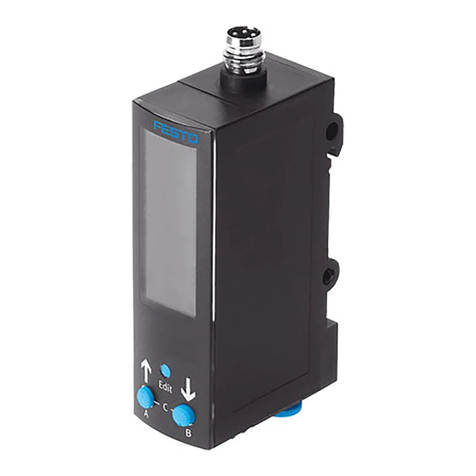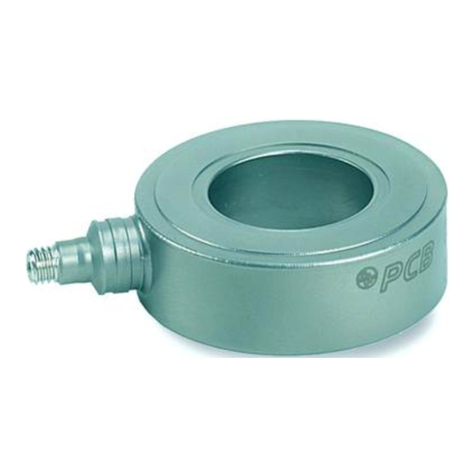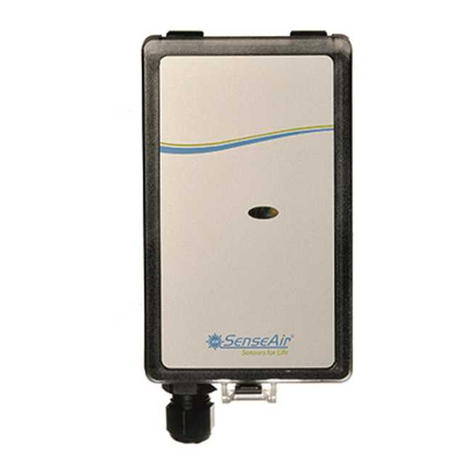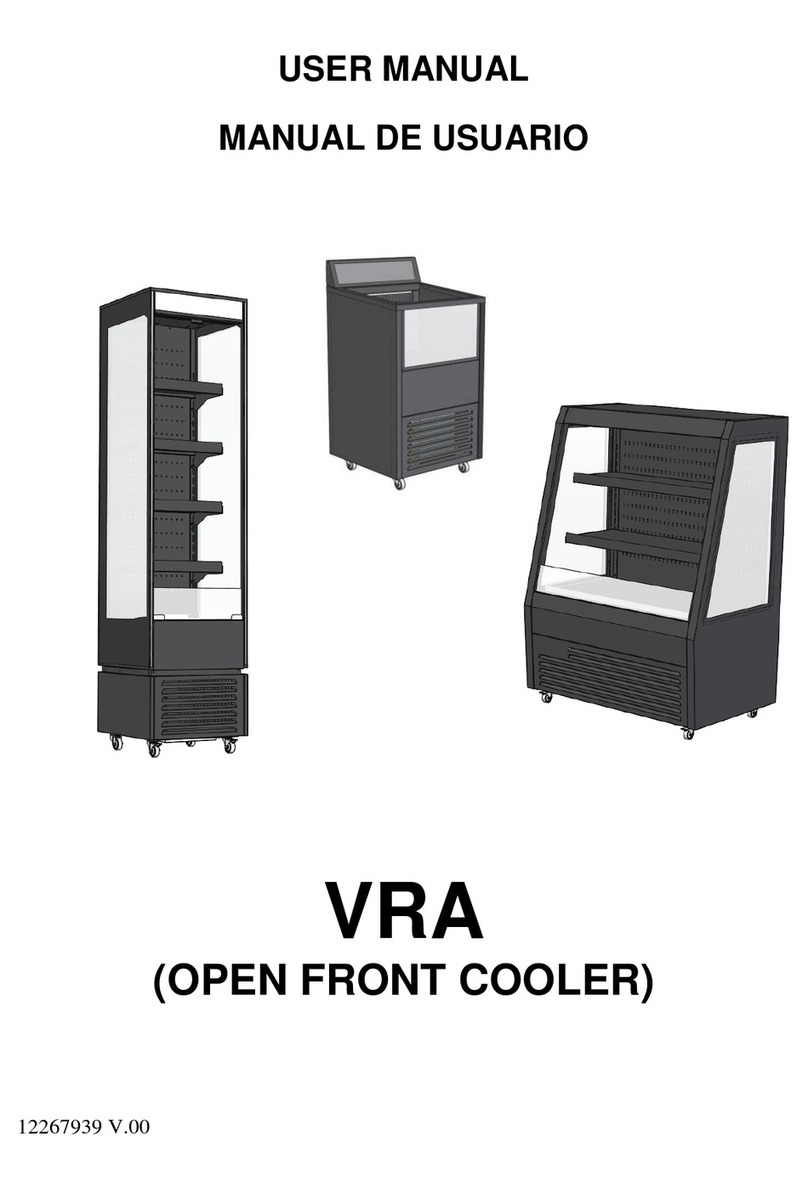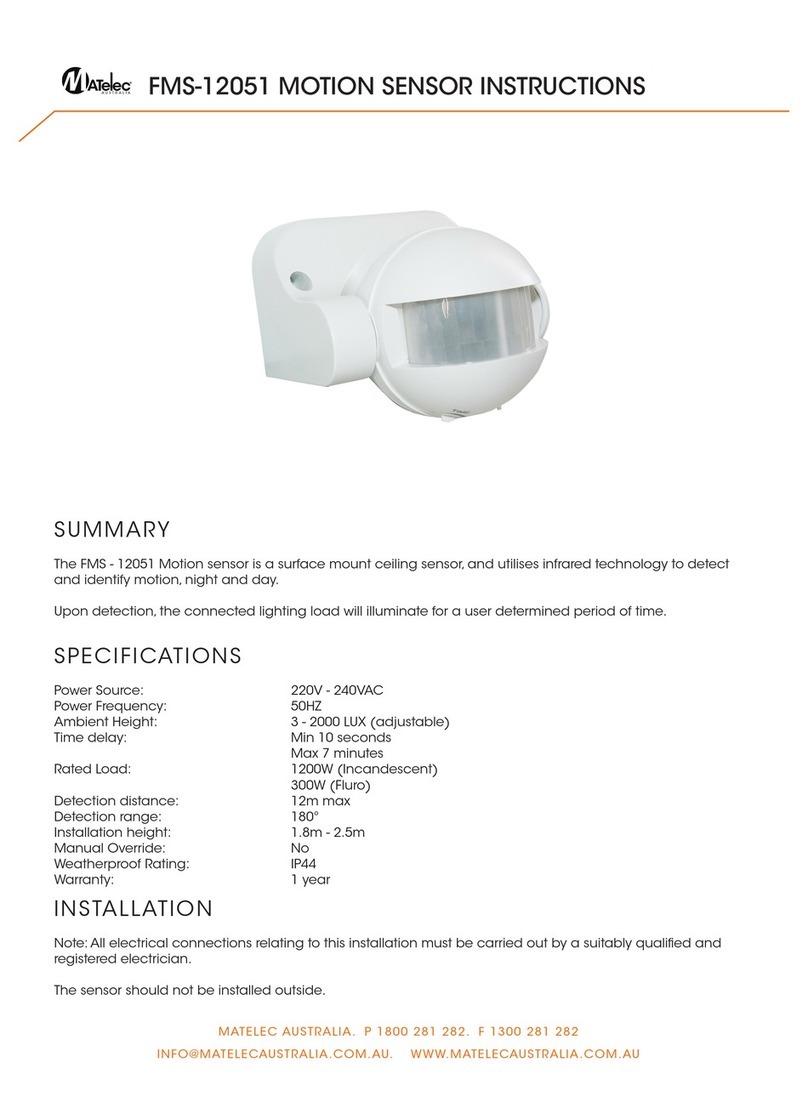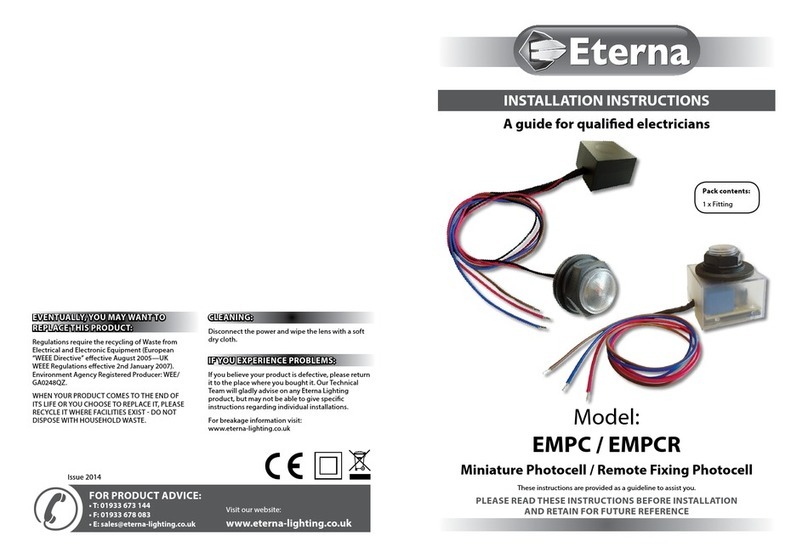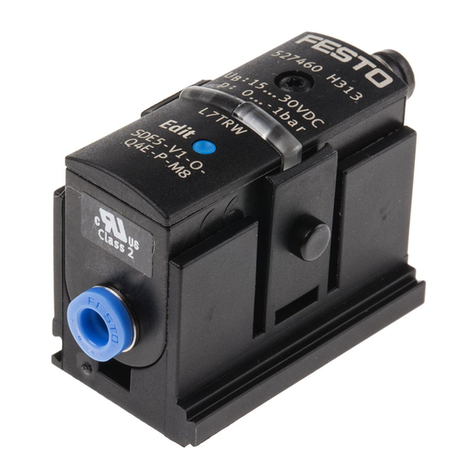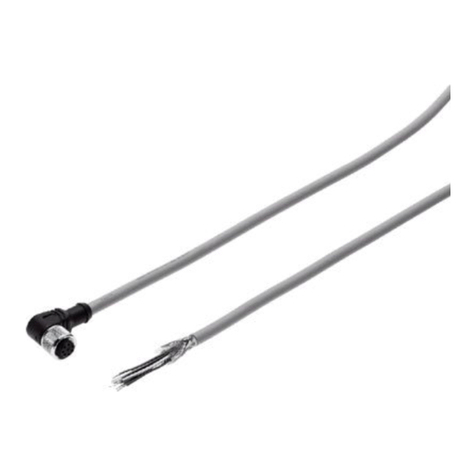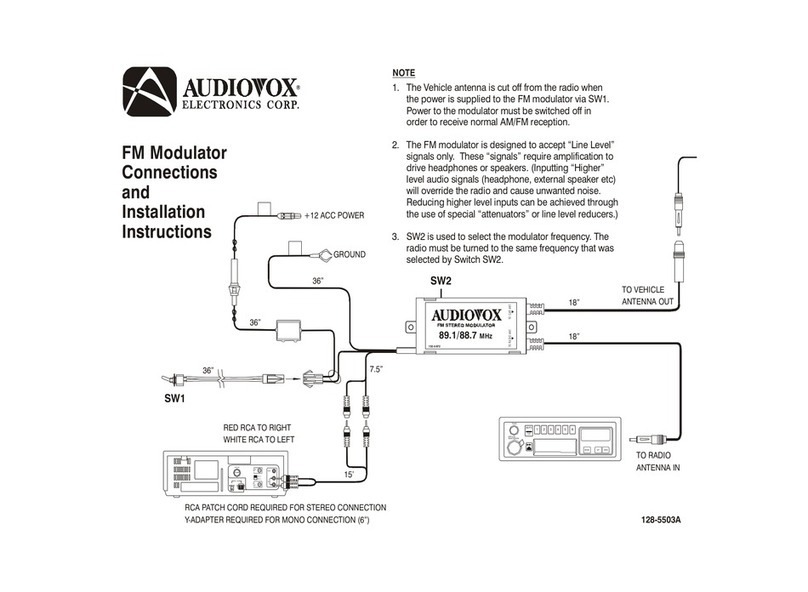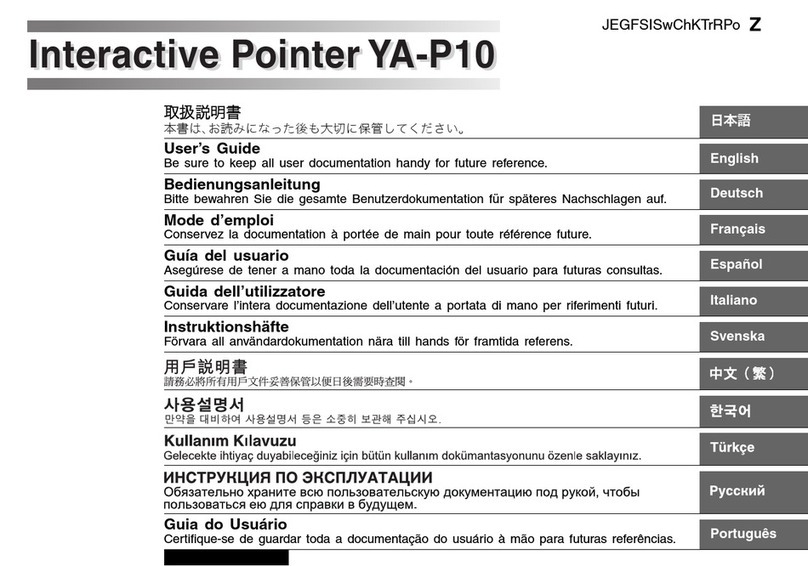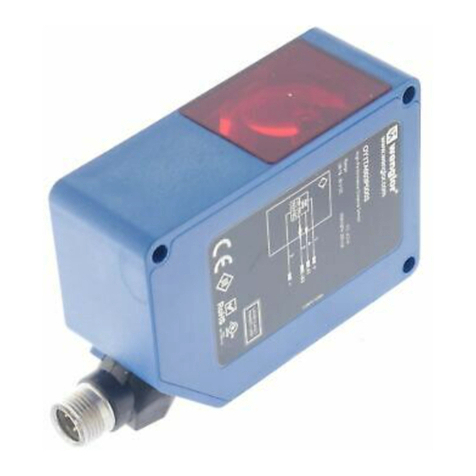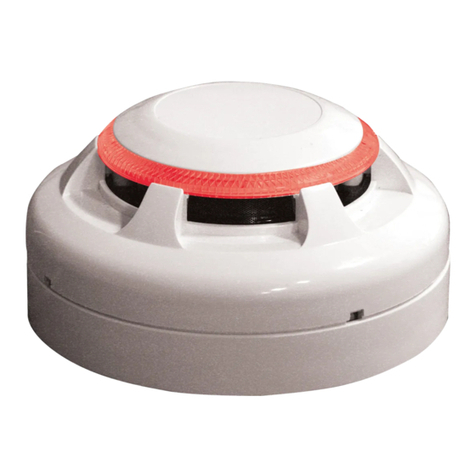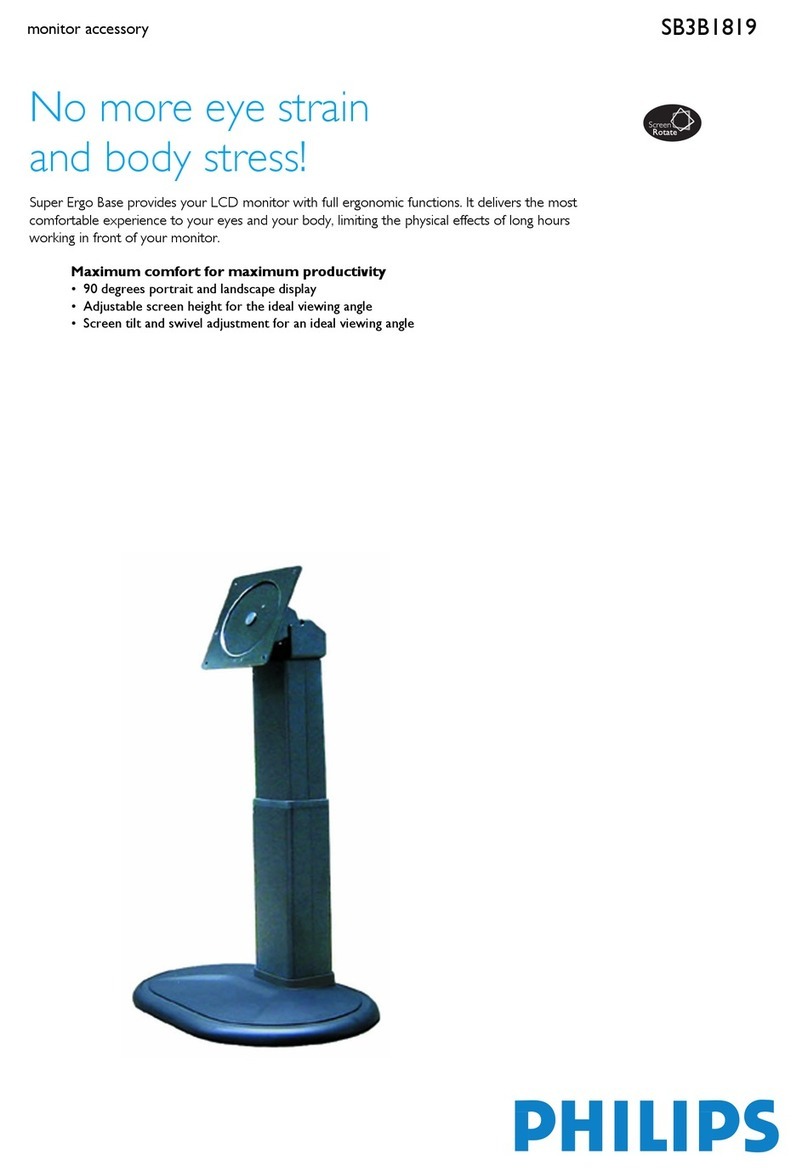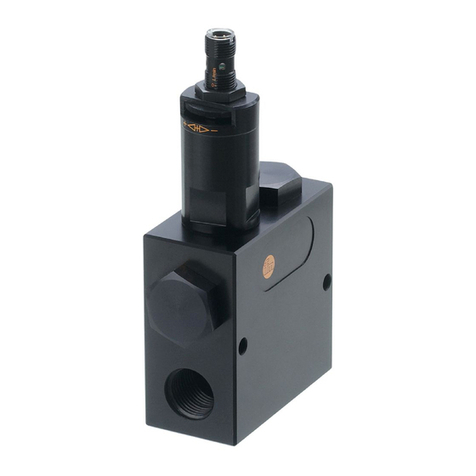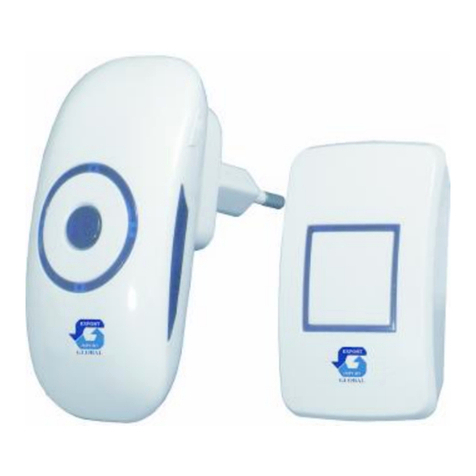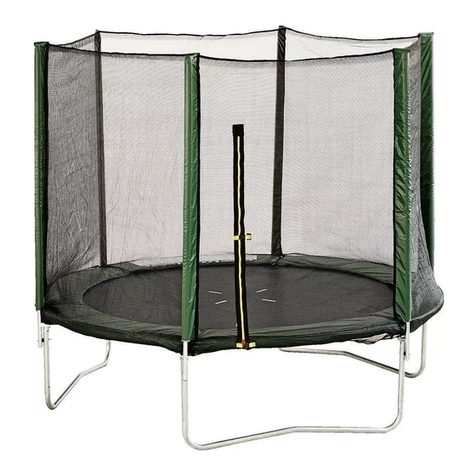9 Fault clearance
Malfunction Possible cause Remedy
No display No operating voltage or
impermissible operating voltage
Apply permissible operating
voltage
Electrical connections swapped Connect the device in accordance
with the circuit diagram
Device defective Replace device
Display or
switching output
does not react in
accordance with
the settings
Short circuit or overload at the
output
Eliminate short circuit or overload
Incorrect switching point taught
(e.g. at 0 bar)
Repeat teaching procedure
Device defective Replace device
Parameter incorrect Reset to factory settings
[Er_1] / [FAIL] 1) Device defective Replace device
[Er_2] / [ASIC] 1) Device defective Replace device
[Er10] / [OVER] Measuring range exceeded Comply with the measuring range
[Er20] / [tEMP] 2) Temperature error Check operating conditions
Replace device
[Er21] / [SHRt] 2) Short circuit at OutA Eliminate short circuit
[Er22] / [SHRt] 2) Short circuit at OutB Eliminate short circuit
[Err] / [BUSY] OutA is switched active Check device settings
[Err] / [ID] Device ID error,
replication function failed
When replicating, use sensors with
the same type (same device ID)
[Err] / [COMM] IO-Link communication error Check the C/Q line
Check settings of the device sensor
1) Display flashes red
2) Display illuminated red
Fig. 21
10 Accessories
Accessories: èwww.festo.com/catalogue
11 Technical data
SPAN-
General
Approval certificate RCM
CE marking (èdeclaration of conformity) In accordance with EU EMC directive
Note on materials RoHS compliant
Input signal / measuring element
Operating medium Compressed air in accordance with
ISO 8573-1:2010 [7:4:4]; inert gases, operation
with lubricated medium possible
Temperature of medium [°C] 0 … +50
Ambient temperature [°C] 0 … +50
Output, general
Accuracy
– P16 [% FS] ±2 at room temperature
– B2, B11, V1, P1, P2, P6, P10,
P025, P05, V025, V05, P12
[% FS] ±1.5 at room temperature
– B2, B11, V1, P1, P2, P6, P10 [% FS] ±3 in the entire temperature range
– P025, P05, V025, V05, P12,
P16
[% FS] ±4 in the entire temperature range
Repeat accuracy [% FS] ±0.3 with Filt = OFF
Temperature coefficient [% FS/K] Typically 0.05
Switching output
Switching output 2x PNP or 2x NPN switchable
Switching function Threshold value comparator
Window comparator
Auto difference monitoring
Switch-on/switch-off time [ms] typ.: 2, max.: 4 with FILT = OFF
Max. output current [mA] 100
Capacitive load maximum DC [nF] 100
Voltage drop [V] Max. 2
Pull-down / pull-up resistor PNP: integrated; NPN: not integrated
Inductive protective circuit Present
Analogue output
Output characteristic curve
initial value … end value
[V]
[V]
0 … 10
1 … 5
[mA] 4 … 20
Max. load resistance of current
output
[Ω] 500
Min. load resistance of voltage
output
[kΩ] 20
Output, additional data
Short circuit protection Yes
Overload protection Present
Electronics
Max. current consumption [mA] 230
Nominal operating voltage DC [V] 24
Operating voltage range DC [V] 15 … 30
No-load supply current [mA] Max. 30
Ready-state delay [ms] typ. 801)
Protection against polarity reversal All connections against each other
Mechanical system
Mounting position Any, avoid condensation gathering in the sensor
Housing material PA reinforced
Keyboard material TPE-O
Threaded connections material Brass (nickel-plated)
Display
Displayable units bar, kPa, MPa, psi, mmHg, inchHg, inchH2O,
kgf/cm2
Immissions / emissions
Storage temperature [°C] –20 … +80
Max. permissible relative air
humidity
[%RH] 85
Degree of protection (in
accordance with EN 60529)
IP40
Protection class (in accordance with DIN
VDE 0106-1)
III
Resistance to shocks (in accordance with
EN 60068-2)
30 g acceleration with 11 ms duration
(half-sine)
Vibration resistance (in accordance with
EN 60068-2)
10 … 60 Hz: 0.35 mm / 60 … 150 HZ: 5 g
1) After this time, the electrical outputs take a defined, stable condition
Fig. 22
SPAN- -B2 -B11 -V025 -V05 -V1 -P025 -P05
Pressure measuring
range
Start value
[bar]
[MPa]
-1
-0.1
0
0
Pressure measuring
range
End value
[bar]
[MPa]
1
0.1
10
1
-0.25
-0.025
-0.5
-0.05
-1
-0.1
0.25
0.025
0.5
0.05
Overload range
Start value
[bar]
[MPa]
-1
-0.1
Overload range
End value
[bar]
[MPa]
5
0.5
15
1.5
1
0.1
2
0.2
5
0.5
1
0.1
2
0.2
Fig. 23
SPAN- -P1 -P2 -P6 -P10 -P12 -P16
Pressure measuring
range
Start value
[bar]
[MPa]
0
0
Pressure measuring
range
End value
[bar]
[MPa]
1
0.1
2
0.2
6
0.6
10
1
12
1.2
16
1.6
Overload range
Start value
[bar]
[MPa]
-1
-0.1
Overload range
End value
[bar]
[MPa]
5
0.5
6
0.6
15
1.5
20
2.0
Fig. 24
IO-Link1)
Protocol version Device V1.1
Profiles Smart sensor profile
Function classes Binary data channel (BDC)
Process data variable (PDV)
Identification
Diagnostics
Teach channel
Communication mode COM2 (38.4 kBaud)
Port class A
Process data width IN 2 byte
Process data content IN 2 bit BDC (pressure monitoring)
14 bit PDV (pressure reading)
IODD, IO-Link device description èwww.festo.com/sp
1) Only SPAN-...-PNLK-PNVBA
Fig. 25






